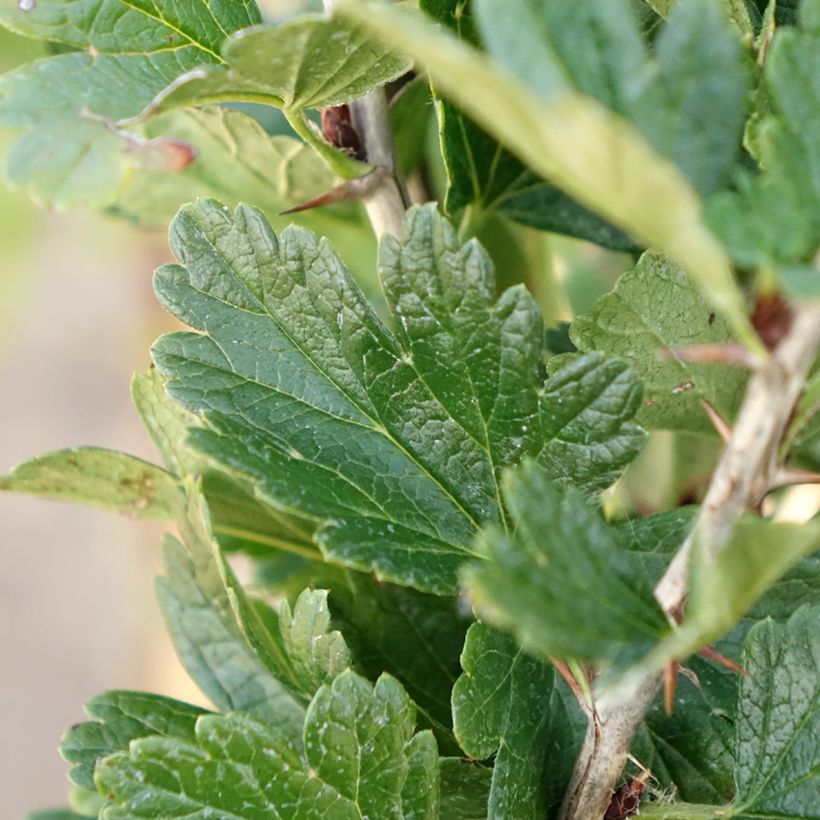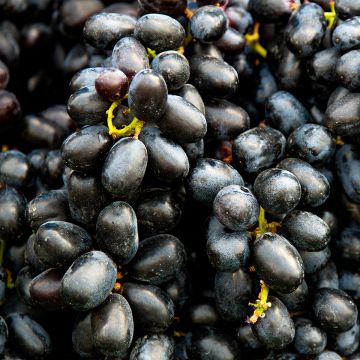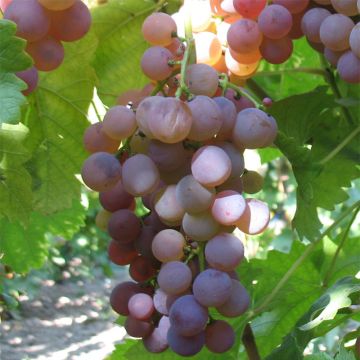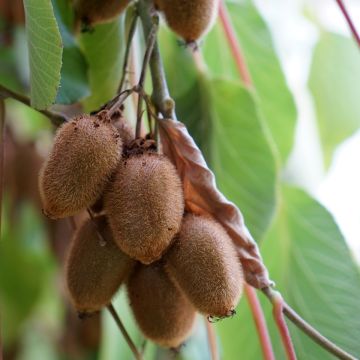Paese di consegna e lingua
La tua posizione sembra essere:
La tua posizione è:
Per godere della migliore esperienza sul nostro sito, è possibile cambiare:
Paese di consegna:
Andorra
Austria
Belgio
Bulgaria
Canada
Cechia
Cile
Cipro
Croazia
Danimarca
Estonia
Finlandia
Francia
Germania
Grecia
Irlanda
Islanda
Italia
Lettonia
Lituania
Lussemburgo
Malta
Monaco
Paesi Bassi
Polonia
Portogallo
Regno Unito
Romania
Slovacchia
Slovenia
Spagna
Svezia
Svizzera
Ungheria
Consegniamo solo articoli nelle categorie semi e bulbi nel tuo Paese. Se aggiungi altri articoli al carrello, questi non potranno essere spediti.
Lingua:
Francese
Tedesco
Spagnolo
Inglese
My Account
Salve
I miei elenchi di preferiti
Plantfit
Il mio carrello
Accesso / Registrazione
Sei già cliente?
Non sei ancora cliente?
Crea il tuo account per poter seguire il tuo ordine, accedere al nostro servizio clienti e, se lo desideri, approfittare delle nostre prossime offerte.


Uva-spina Crispa Darling
Uva-spina Crispa Darling
Ribes uva-crispa Crispa® Darling ®
Uva-spina, Ribes Uva-spina
Più di per avere il tuo ordine spedito oggi stesso.
Inviato per lettera da 3,90 €.
Spese di spedizione da 5,90 €. Articoli di grandi dimensioni, spese di spedizione a partire da 6,90 €.
Altre informazioni
Questo articolo non è disponibile per il tuo paese.
Paese di consegna:
Andorra
Austria
Belgio
Bulgaria
Canada
Cechia
Cile
Cipro
Croazia
Danimarca
Estonia
Finlandia
Francia
Germania
Grecia
Irlanda
Islanda
Italia
Lettonia
Lituania
Lussemburgo
Malta
Monaco
Paesi Bassi
Polonia
Portogallo
Regno Unito
Romania
Slovacchia
Slovenia
Spagna
Svezia
Svizzera
Ungheria
Programmare la data di consegna,
e scegliere la data nel carrello
6 mesi garanzia di permuta su questa pianta
Altre informazioni
Garantiamo la qualità delle nostre piante per un intero ciclo di crescita e sostituiremo a nostre spese qualsiasi pianta che non si riprenda nelle normali condizioni climatiche e di impianto.
A partire da 5,90 € per la consegna a domicilio e 6,90 € per la consegna a domicilio
Consegna a domicilio espressa in 24-48 ore: 8,90 €.
Descrizione del prodotto
The Ribes uva-crispa Crispa ® 'Darling' ® has been selected for its regular and high yield of hairless fruits, with a sweet and fruity flavour, slightly acidic, and its improved resistance to powdery mildew and leaf drop disease, even in damp soil. In summer, the fruits are pleasant to pick for delightful natural tastings, to enhance salads, add flavour to savoury dishes or elevate desserts. In April, it is covered with insignificant greenish flowers, but a source of food for bees and other beneficial garden insects. Easy to maintain and disease-resistant, this small fruit bush offers a simple use in the garden, in open ground or in pots. Plant from October to March for harvesting in August.
The Ribes uva-crispa, in Latin Ribes grossularia var. uva-crispa, also known as Spiny Gooseberry, Curly Grape, Gooseberry, Thwacker, Cruncher, or Wineberry, belongs to the Grossulariaceae family, like the Redcurrants (Ribes rubrum) and the Blackcurrants (Ribes nigrum). The name Gooseberry comes from the English who have long used this gooseberry to make a sweet and sour sauce to accompany mackerel. Cultivated in northern Europe since the 16th century, the Gooseberry is a fertile hybrid resulting from the crossbreeding of two species native to Europe and North Africa, still spontaneously found in mountain forests in Scotland, France, and the Caucasus.
The Ribes uva-crispa Crispa ® ‘Darling’ ® is a recent Swiss creation, part of the Crispa ® range. A range composed of gooseberry varieties selected for their high yields of juicy and fleshy fruits, with a high sugar content, on vigorous and disease-resistant plants. It forms a bushy, thorny shrub, with a tufted growth of slightly stiff, branched, and spreading twigs. This very hardy bush will reach 1 m in height with a spread of 80 cm. The foliage is deciduous, composed of palmate, lobed, and aromatic, medium green leaves. This shrub resembles classic gooseberries but mainly differs in the fruits: larger, sweet in flavour, they appear singularly along the branches unlike redcurrants. Apart from a few thornless varieties, the Gooseberry typically has prickly stems. Flowering occurs in spring, in the form of clusters of insignificant small greenish flowers, intensely visited by bees. Fruiting mainly occurs on one- and two-year-old branches. Harvesting takes place in July and August. The bush is covered with berries, round to oval, with smooth skin, 1.2 cm in diameter, distributed along the branches. When ripe, the gooseberries turn a wine-like colour, filled with translucent, juicy, fruity, sweet, and slightly acidic pulp, containing tiny seeds.
The 'Darling' Gooseberry is self-fertile, therefore does not require a companion for fruiting, but having another variety nearby will increase production. Harvesting is done as the fruits ripen. It is simplified due to the size of the berries. A gooseberry bush can produce around 2 to 4 kg of fruits per plant depending on the age and growing conditions of the plant. The fruits are rich in vitamin C, antioxidants, minerals, trace elements as well as potassium, calcium, and phosphorus. Moreover, their low sugar content classifies them among the least energy-dense small fruits (50 kcal per 100 g).
The fruit is purifying for the body if consumed barely ripe. Picked from the bush, its gooseberries are exquisite, and for added indulgence, they can be sprinkled with a little crystallised sugar. In cooking, to reduce the acidity of the fruits, they can be blanched for a minute then refreshed in cold water. Excellent in jellies or jams, they can also be used to top tarts and make cakes. They are perfect for making syrups, sorbets, ice creams, or desserts. The delicate balance between the fruit aromas and acidity offers an interesting use to accompany meats (game, poultry…), fatty fish (sardines, mackerel, tuna…) or as a finishing touch in mixed salads.
In the summer, the Gooseberry provides the satisfaction of beautiful harvests and the pleasure of tasting delicious fruits, but be careful of the thorns on the branches. You can associate it with Blackcurrants, Raspberries, Blueberries, Mayberry or other small fruit varieties to create a gourmet hedge, reinforcing it with its multiple culinary benefits. As with any planting, it is important in a gooseberry plantation to alternate species and varieties, where possible. This reduces the risk of diseases and promotes pollination, even if the variety is self-fertile. It can be grown in a pot; however, you must choose a container at least 40 cm in height and ensure regular watering with non-calcareous water.
Uva-spina Crispa Darling in foto...


Porto
Frutta
Fioritura
Fogliame
Botanici
Ribes
uva-crispa
Crispa® Darling ®
Grossulariaceae
Uva-spina, Ribes Uva-spina
Orticola
Piantagione e cura
Plant Groseillier à maquereaux Crispa Darling from October to March. It appreciates ordinary soils, even poor ones, with a tendency towards acidity. Groseillier thrives in well-drained, fresh soil, but not constantly damp. It dreads heat and drought, so plant it in the sun in regions north of the Loire or in partial shade in the south. Choose a location sheltered from strong winds.
When planting, space the plants 0.80 m apart in all directions. For bare-root plants, soak the roots in praline to prevent air pockets between the roots and the soil. You can either prepare the praline by mixing 1/3 very fine soil or compost, 1/3 cow dung or compost, and 1/3 rainwater, or buy it commercially. Dig a hole, incorporate well-rotted manure or compost into the soil, place the plant and cover with soil. Water generously. Then mulch the soil to retain moisture in summer.
An organic fertilizer application at the start of vegetation will support fruit production and plant health. Groseillier à maquereaux can be attacked by aphids and mites, which can be eliminated by spraying soapy water or a decoction of Aglio. It is also susceptible to fungal diseases, such as anthracnose (brown spots on leaves and fruits), powdery mildew (white fuzz), grey mould (white then brown fuzz on berries), and rust (orange pustules on the underside of leaves). Regularly spray with comfrey, nettle manure or a decoction of horsetail. Remove and burn all diseased parts. In June-July, protect the harvest with nets to deter bird greed.
In a groseillier plantation, as in any plantation, it is important to alternate varieties and species when space allows: pollination will be favoured, and the spread of epidemics or diseases will be limited.
Quando piantare?
Per quale località?
Trattamenti
Questo articolo non è ancora stato recensito; sii il primo a condividere la tua esperienza.
Petits fruits
Non hai trovato quello che cercavi?
La rusticità è la temperatura invernale più bassa che una pianta può sopportare senza subire gravi danni o addirittura morire. Tuttavia, la rusticità è influenzata dalla posizione (zona riparata, come un patio), dalla protezione (copertura invernale) e dal tipo di terreno (la rusticità è migliorata da un terreno ben drenato).

Condizioni generali di utilizzo del servizio fotografico per clienti
Al fine di favorire l'interazione e la condivisione di esperienze tra giardinieri, Promesse de fleurs offre diversi servizi che consentono di caricare contenuti sul proprio Sito, in particolare attraverso il modulo "Condivisione foto".
L'Utente si impegna a non:
- Pubblicare contenuti illegali, pregiudizievoli, ingiuriosi, razzisti, che incitano all'odio, revisionisti, contrari alla pubblica decenza, che violano la privacy o i diritti privati di terzi, in particolare il diritto all'immagine delle persone e dei beni, i diritti di proprietà intellettuale o il diritto alla privacy.
- Pubblicare contenuti per conto di terzi.
- Impersonare un terzo e/o pubblicare informazioni personali su un terzo.
In generale, l'Utente si impegna ad astenersi da qualsiasi comportamento non etico.
Tutti i Contenuti (in particolare testi, commenti, file, immagini, foto, video, opere, ecc.), che possono essere oggetto di diritti di proprietà, diritti di proprietà intellettuale, diritti di immagine o altri diritti privati, restano di proprietà dell'Utente, fatti salvi i diritti limitati concessi dalla licenza definita di seguito a Promesse de fleurs. Gli Utenti sono liberi di pubblicare o meno tali Contenuti sul Sito, in particolare tramite il servizio "Condivisione foto", e accettano che tali Contenuti diventino pubblici e liberamente accessibili, in particolare su Internet.
Essi riconoscono, si impegnano e garantiscono di disporre di tutti i diritti e le autorizzazioni necessarie per tale pubblicazione sul Sito, in particolare per quanto riguarda la legislazione in vigore e i diritti di privacy, di proprietà, di proprietà intellettuale, di immagine, contrattuali o di qualsiasi altra natura. Pubblicando tali Contenuti sul Sito, l'Utente è consapevole di assumersi la responsabilità di editore dei Contenuti ai sensi di legge e concede a Promesse de fleurs una licenza non esclusiva, gratuita e mondiale per tali Contenuti, per tutta la durata della loro pubblicazione, compresi i diritti di riproduzione, rappresentazione, caricamento, visualizzazione, esecuzione, trasmissione e archiviazione.
Gli Utenti autorizzano inoltre l'associazione del loro nome al Contenuto e accettano che tale associazione non sia sempre possibile.
Con la loro pubblicazione, gli Utenti autorizzano i Contenuti a diventare automaticamente accessibili su Internet, in particolare su altri siti e/o blog e/o pagine web del sito Promesse de fleurs, comprese in particolare le pagine dei social network e il catalogo Promesse de fleurs.
Gli Utenti possono liberamente ottenere la restituzione dei Contenuti affidati contattando il servizio clienti tramite il modulo di contatto.
I periodi di semina indicati sul nostro sito web si riferiscono a Paesi e regioni all'interno della Zona USDA 8 (Francia, Regno Unito, Irlanda, Paesi Bassi).
Nelle zone più fredde (Scandinavia, Polonia, Austria...), ritardare le semine all'aperto di 3-4 settimane o seminare sotto vetro.
Nei climi più caldi (Italia, Spagna, Grecia, ecc.), anticipare la semina all'aperto di qualche settimana.
Il periodo di raccolta indicato sul nostro sito web si riferisce ai Paesi e alle regioni della zona USDA 8 (Francia, Inghilterra, Irlanda, Paesi Bassi).
Nelle zone più fredde (Scandinavia, Polonia, Austria...) la raccolta di frutta e verdura potrebbe essere ritardata di 3-4 settimane.
Nelle zone più calde (Italia, Spagna, Grecia, ecc.), la raccolta avverrà probabilmente prima, a seconda delle condizioni meteorologiche.
Il periodo di semina indicato sul nostro sito web si riferisce a Paesi e regioni situati nella zona USDA 8 (Francia, Regno Unito, Irlanda, Paesi Bassi).
Varia a seconda del luogo di residenza:
- Nelle zone mediterranee (Marsiglia, Madrid, Milano, ecc.), l'autunno e l'inverno sono i periodi migliori per la semina.
- Nelle zone continentali (Strasburgo, Monaco, Vienna, ecc.), ritardare la semina di 2 o 3 settimane in primavera e anticiparla di 2 o 4 settimane in autunno.
- Nelle regioni montuose (Alpi, Pirenei, Carpazi, ecc.), è meglio piantare in tarda primavera (maggio -giugno) o in tarda estate (agosto-settembre).
Nei climi temperati, la potatura degli arbusti a fioritura primaverile (forsizia, spiree, ecc.) deve essere effettuata subito dopo la fioritura.
La potatura degli arbusti a fioritura estiva (lillà indiano, perovskia, ecc.) può essere effettuata in inverno o in primavera.
Nelle regioni fredde e con piante sensibili al gelo, evitate di potare troppo presto quando possono ancora verificarsi forti gelate.
Il periodo di fioritura indicato sul nostro sito web si riferisce a paesi e regioni situati nella zona USDA 8 (Francia, Regno Unito, Irlanda, Paesi Bassi, ecc.).
Varia a seconda della zona di residenza
- Nelle zone da 9 a 10 (Italia, Spagna, Grecia, ecc.), la fioritura avverrà da 2 a 4 settimane prima.
- Nelle zone da 6 a 7 (Germania, Polonia, Slovenia e regioni montuose inferiori), la fioritura sarà ritardata di 2 o 3 settimane.
- Nella zona 5 (Europa centrale, Scandinavia), la fioritura è ritardata di 3-5 settimane.









